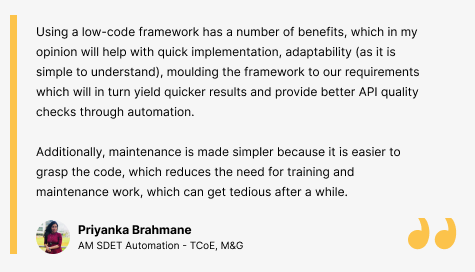
Table Of Contents
Community Newsletter #33 is Here!
On May 25, 2023 The world celebrated the birthday of Java.
We have come a really long way from programming circuits, strings with 0’s and 1’s, assembler instructions, and then different languages providing more and more abstraction layers. Each layer removes complexity, bridging the divide between humans and machines.

James Martin, in the preface of his 15th book about the software industry, titled “Application Development Without Programmers,” stated, “The number of programmers available per computer is shrinking so fast that most computers in the future must be put to work at least in part without programmers.”
His foresight regarding the shortage of technical talent almost four decades ago sparked contemplation about the possibilities that could arise from the complete elimination of coding.
No-code is an approach that allows anyone, regardless of prior experience or skill level, to build applications without writing a single line of code. Since no-code platforms are visual abstractions of programmatic functions, it’s faster and easier for users of all skill levels to change the function, flow, and feel of the software.
How do we differentiate “coded” tools from “codeless” tools or hybrid?
No-code, Codeless, and Scriptless are essentially the same thing. These tools allow users to create and execute tests without any previous coding experience. They allow anyone to create a test visually based on any type of business logic that needs validation, making software testing much more accessible.
However, there are varying levels of “codeless-ness,” giving way to low-code tools. Low-code tools allow for code insertion into the text.
In short, you’re still coding, just in a different syntax.

How do you decide if you need LCNC tools?
Look at the timeline, product, team tech skills, scalability, and maintenance overheads. Ask questions like should you run it in headless mode, do you need to run it in CI, want to customize it, or run tests in parallel?
Can it test everything? Yes! If you can define everything and you can customize the solution. Do a POC with the criteria in mind. Here’s an interesting thread.
“The future of coding being less about coding.”
“Coding is not the main event anymore. Building software is the main event. Coding is just one small part of it. We think the future of coding is no coding at all. We think autonomous coding is a very real thing.”
-Chris Wanstrath (Co-founder and former CEO, GitHub) Read here.
Is Low code only for citizen developers?
Developers can leverage low-code platforms to streamline their workflows, automate repetitive tasks, quickly prototype, and focus on higher-level aspects of application functionality.
For a better developer experience, automatic code generators (ACG) like GitHub Copilot, Amazon CodeWhisperer, and Tabnine, suggest code and functions in real time that developers can whiz through code and spot errors on the fly!
Moreover, low-code platforms provide collaborative opportunities between citizen developers and developers and enable cross-functional teams to work together and leverage each other’s expertise, and productivity.
In short, low code is not exclusive to citizen developers.
OpenAl announced OpenAI Codex, an entirely new way to “write code” in the natural language. Now, programmers can use English to describe what they want their software to do, and OpenAl’s generative Al model will automatically generate the corresponding computer code in their choice of programming language.
So, does this mean coding is dead?

It can never replace the need for a programmer to understand code. AI models have not made coding obsolete. They have just made coding more accessible, efficient, and impactful.
Let us go through the reads sourced for you in this context.
The Code Less Movement
The Codeless Code – Tales to make wiser programmers.
Fables and Koans for the Software Engineer is a series of stories by Qi about the programming monks of the Temple of the Morning Brass Gong, parodying the style of Zen Koans. Each story (or “case”) is meant to humorously illustrate a principle of programming philosophy or best practices.
No-code Revolution. Why now? Why not 20 years ago? Michael Dubakov tries to answer an interesting question he received describing four software waves from 1960 to 2030.
Testing Democratized
Check the Ins and Outs of codeless testing – Is it the same as record and playback? Take a look at its evolution, expected trends, and future in this guide.
There’s more to scriptless testing than just hitting the record button. Here are 10 scriptless testing approaches you can adopt.
Low-code tools have a reputation for making it very easy to start with but a nightmare to maintain. Mike Fitzmaurice shares his pieces of advice on how you can potentially avoid bad outcomes over the long term.
Some Downfalls
There are plenty of recording tools that can follow your actions on a website and save them as test scripts. Dennis Martinez lists out the pros and cons of using them.
In this blog, Bas Dijkstra explains why the pursuit of making test automation easier by inventing more and more low-code tools is not necessarily the best path to follow. And why investing in software development skills matters more than ever.
Wait, Is Avoiding Low-Code An Automation Anti-Pattern? is another read in this context by Paul Grizzaffi.
Discussion on Tools
Visual tests, despite their graphical nature, still involve code. Jesper Ottosen argues that understanding this fact is crucial for effective testing and highlights the importance of treating visual tests as code-based artifacts.
Recently, Google has decided to launch its own Recorder tool embedded directly into Chrome. Introducing the Chrome DevTools Recorder!
Angie Jones lists 10 features every codeless test automation tool should offer, and here’s a follow-up blog on the same from Testsigma (Thank You, Angie, for the shoutout!)
Check out the list of top low code tools for test automation.
Reduce the gap between an ‘SDET’ and a ‘True Tester’ by using codeless test automation. Codeless automation takes less effort, and an SDET can be efficient as a ‘True Tester.’
What about the vendors of low code platforms? What kind of testing do they do?

Voice of the Community
Nithin shares his thoughts on low code tools and his experience with them.

It depends on multiple factors, most of the LCNC platforms take over the maintenance part so that the teams can fully focus on the script development part, which brings more ROI in terms of business. And few situations where it’s more preferred to choose is when less number of Automation engineers are available, when the team is not equipped well with coding skills and needs to move faster, and when a complete e2e solution has to be set up within a shorter span of time, etc.
Evaluation will cover several aspects, team adaption factor is one, and then support provided, authoring speed, maintainability, scalability, collaboration options, integrations, CI/CD, documentation, tool stability, cross platform and device support etc will also be the factors under consideration.
The main limitation I personally felt is the customization part, LCNC tools (mostly) will be rigid and restrict the users from making the framework fully customizable, whereas ground up solutions help end to end customizations.
For me, it has its own pros and cons, and not one tool fits all requirements. Identifying the right one matters, and it has to be selected with the above factors in mind, else it won’t be giving the expected results and will only be an added effort for the team.
So it will stay, but it can be a double edged sword if you do not use it wisely!
Seema Prabhu shares 3 situations she managed with Low code automation.
First – I had a team which struggled with coding, the learning curve was huge, but they had good domain experience and worked very well with their squad. So replacing them was not an option.
Second- Application – we build websites (100s) for each OEM, and overall have 1000 or so we maintain. We customize individual ones based on customer requests. So regression testing each one – by coded automation was not possible unless we had dedicated qa for each dealer ( that’s impossible). So, low – code was handy here.
Third, our customer is also the delivery team – who build websites for dealers (new ones) and need to test it before they hand it over again. These are customized. So coded would not work unless it had a strong, very big team dedicated.

Next, let’s hear from Priyanka Brahmane.
“I use the Karate API Automation framework, which I would classify as a Low-code rather than a No-code framework.”

Latest from Testsigma
Up Your Testing Game!
- Cool Mobile Debugger that allows you to fix issues in real-time on the go
- Testsigma X JIRA to monitor test progress & deployment readiness
- Logic based filtering for Conditional Statements
- Unify tests and features across all mobile OEMs and OS versions
Upcoming Webinar!
Sowmya Sridharamurthy takes us on a journey to API Testing mastery!
Join an exclusive webinar [on June 22] as Sowmya dives deep into the topic, leaving you with practical tips, inspiration, and a fresh perspective on the power of API testing.
Is low code/no code a game-changer or a setback?
We would love to hear your perspective! Share your thoughts so we can share them with the community!
Until next time,
With 💚,
Team Testsigma


